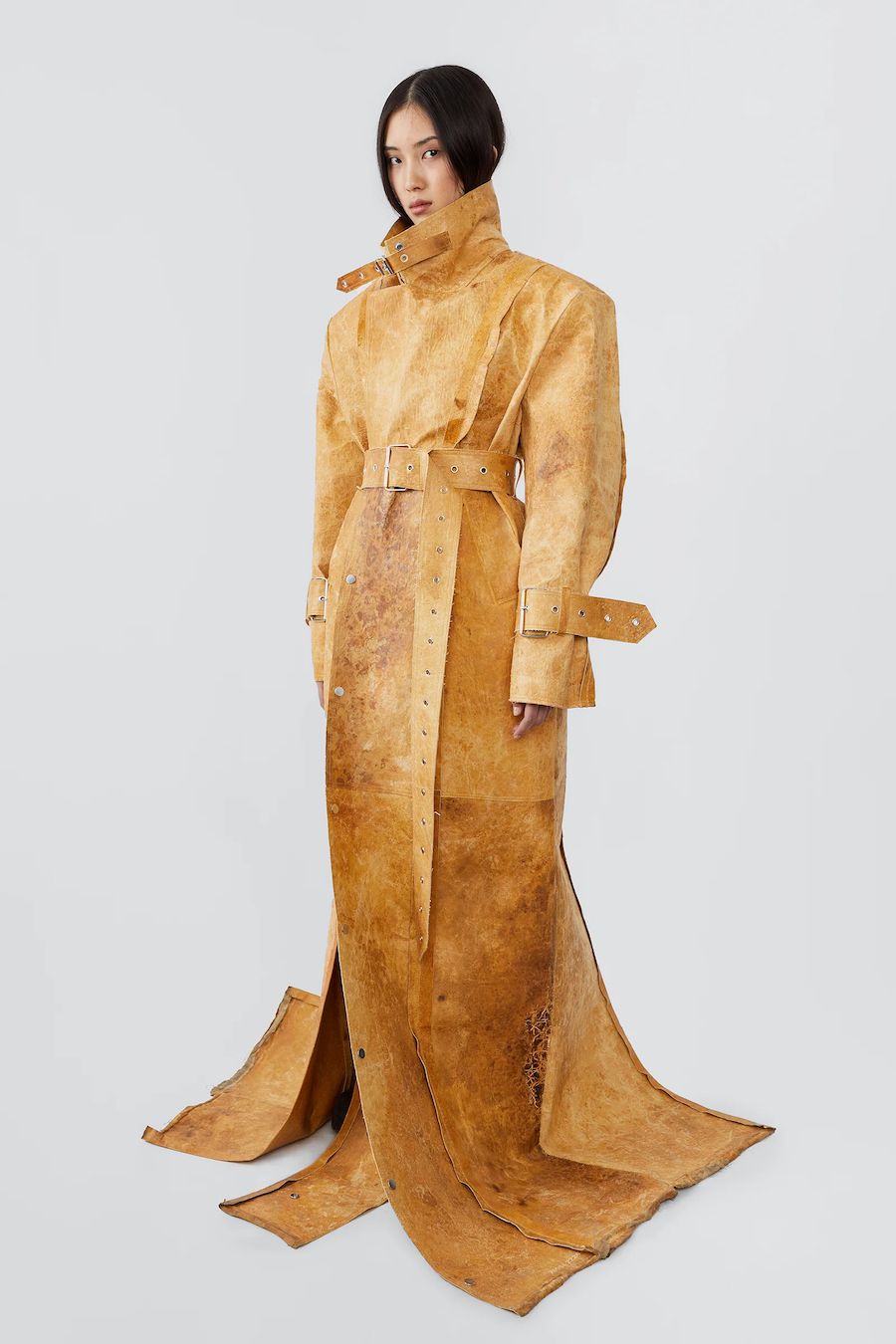
Over the past 10 years, some $3 billion has poured into innovating the fabric of the fashion industry, driving excitement around next-generation materials like mushroom leather, lab-brewed fibres and recycled textiles.
But earlier this month, Bolt Threads, which is backed by Stella McCartney and Kering, halted operations after years of high-profile promises. In response, BoF columnist Kenneth Pucker opined on the hurdles preventing new materials from reaching scale in an opinion piece. But it would be a mistake to write the sector off.
What we’re now witnessing among next-gen materials start-ups is the usual course of events when an emerging sector moves out of an early “hype cycle.” We’re in a shake-out, and companies with real solutions will make it.
The reason is that the demand — and opportunity — is real. Brands need new materials with lower environmental impact to meet bold and public climate commitments. And 92 percent of US shoppers say they would buy a product made from next-generation materials, with a significant number willing to pay a premium to do so, according to a recent survey by North Mountain Consulting Group for Material Innovation Initiative, a next-gen materials think tank. Simultaneously, consumers’ appetite for fashion and luxury continues to soar, necessitating new sources of materials to fuel growth.
Though the materials we commonly use may appear entrenched, the fashion and luxury industries are constantly being transformed by innovation. Take polyester, which in less than 100 years became fashion’s most commonly used material. The adoption cycle is only getting faster. More recently, recycled polyester has grown to comprise 15 percent of that market, according to Textile Exchange. Lab-grown diamonds are already around 10 percent of all diamonds sold. Fur has become a faux-pas.
What differentiates new materials that fail from those that succeed is the combination of product quality and scalable manufacturing. These are principles that must be woven into the product’s DNA from day one of development, and also into the mindset of the team bringing that product to life. Not all start-ups can master this. Achieving these principles requires a focus and patience that can often be in short supply in Silicon Valley.
When the proper time is put into developing new materials, the rewards can be huge. Just look at ultra-high-performance fabric Dyneema, whose parent company sold for $1.5 billion last year. Or the 2021 IPO of Spinnova, a maker of wood-based and waste-based fibres. Among others, these successes helped spur massive investment in this space.
The Material Innovation Initiative estimates that there are now over 100 next-gen materials companies. In line with venture-backed companies across all sectors, 2021 saw a sharp increase in capital invested in next-gen materials followed by a decrease from 2022 to 2023 due to the rising interest-rate environment. While plenty of start-ups are destined to fail in this new funding regime, many next-gen materials companies continue to successfully raise money; in mycelium alone, MycoWorks raised two rounds during the venture downturn. Last month, Ecovative, another start-up in the space, raised more than $30 million.
The Quality Question
The materials in common use today are there because they are extraordinarily good at what they do. There are technical materials, like nylon, whose strength we expect when we grab a bag strap made from it. And there are other materials, like leather, that we expect to look and feel beautiful and subtly transform with time as it experiences our lives with us.
Next-generation materials that have stalled have struggled to compete without mixing fibre ingredients with plastic to help mimic characteristics like strength and durability. If “mushroom” and “plant-based” innovators try to cloak themselves in sustainability claims while also taking shortcuts with plastic in rushing their material to market, they will never see real adoption. The market speaks clearly, and the message is an important one: Consumers, and brands, won’t sacrifice product quality for the perception of sustainability.
But after years of research and development, more products are gradually coming to market that offer sustainability in addition to quality. At MycoWorks, it’s taken three decades to develop our unique approach to using mycelium as actual sheets of grown biomaterial, rather than as an ingredient mixed with plastic. The resulting natural hand-feel is what’s helped attract the interest of businesses including Hermès, Ligne Roset and General Motors.
It has been difficult. We haven’t always made great product, but today our materials reach quality standards that seemed unreachable even a year ago. That’s why our partners have helped us build a fully funded plant, now constructed, that will produce millions of square feet of Fine Mycelium starting later this year. These volumes will finally enable mycelium to make it into real collections — not just capsules from pilot production volumes — with our brand partners who share the patience required to bring great new products to market.
Why It Matters
While consumers are clamouring for sustainable products, brands are now facing the reality of needing to find ways to meet aggressive sustainability targets.
According to many of the world’s largest luxury companies, leather is responsible for approximately 50 percent of their overall carbon emissions. For companies like LVMH, Kering and Richemont, there is simply no way to achieve their climate commitments without addressing leather.
Certainly, working to make the existing leather supply chain more sustainable is necessary — and doable. But focusing merely on existing leathers neglects other trends facing the industry: that more clients of luxury goods are hungry for both exciting new materials and responsible products. There are market tensions as well, with tight supply of the highest-quality hides running up against surging demand for handbags.
This is a supply chain that is ripe for reinvention, and every segment has a role to play. Retooling nature to create biomaterials that consumers love requires a long-term commitment to the humbling but rewarding journey required to move this industry forward, together.
Matthew L. Scullin is the CEO of MycoWorks.
The views expressed in Op-Ed pieces are those of the author and do not necessarily reflect the views of The Business of Fashion.
How to submit an Op-Ed: The Business of Fashion accepts opinion articles on a wide range of topics. The suggested length is 700-1000 words, but submissions of any length within reason will be considered. All submissions must be original and exclusive to BoF. Submissions may be sent to opinion@businessoffashion.com. Please include ‘Op-Ed’ in the subject line and be sure to substantiate all assertions. Given the volume of submissions we receive, we regret that we are unable to respond in the event that an article is not selected for publication.



